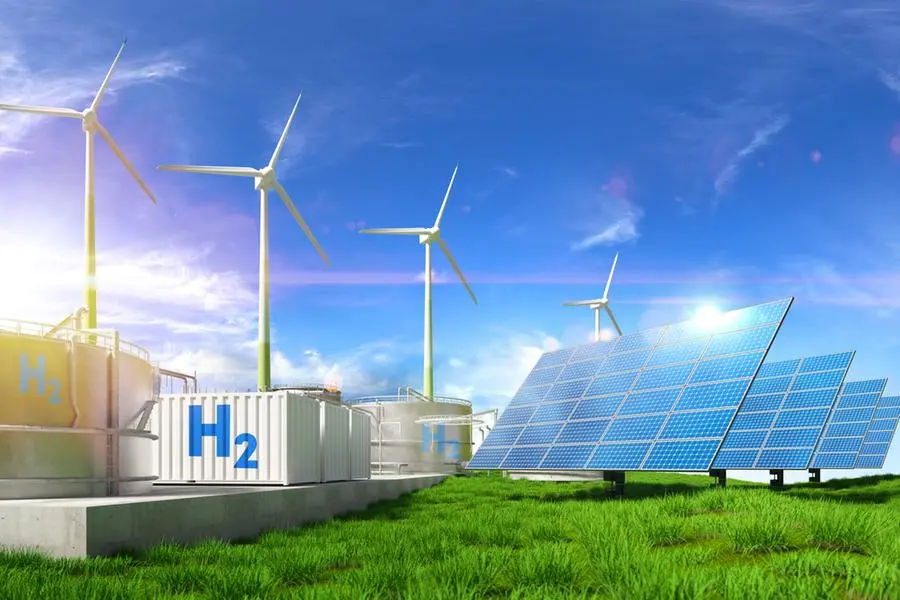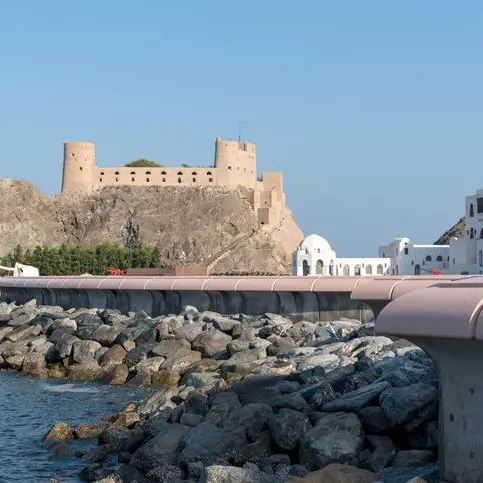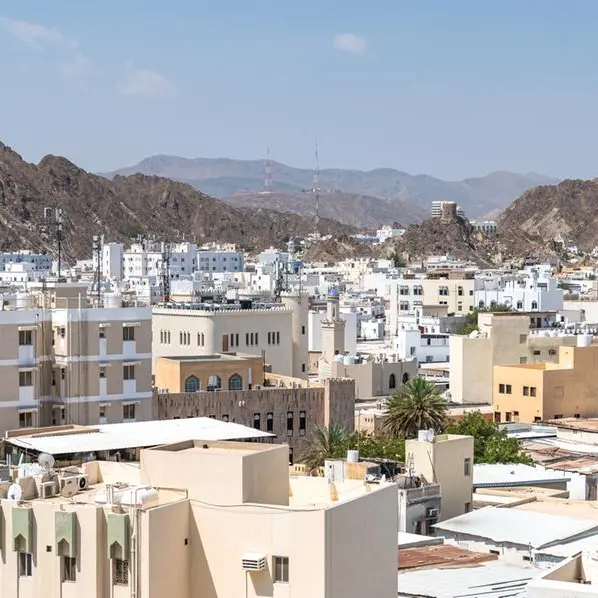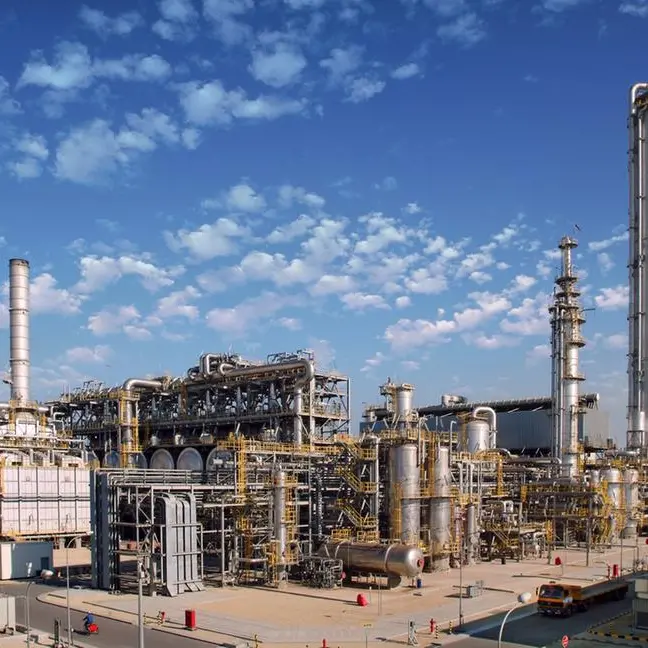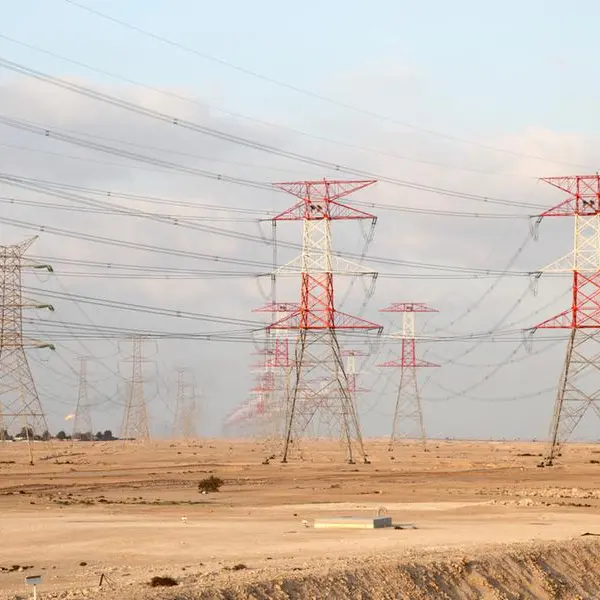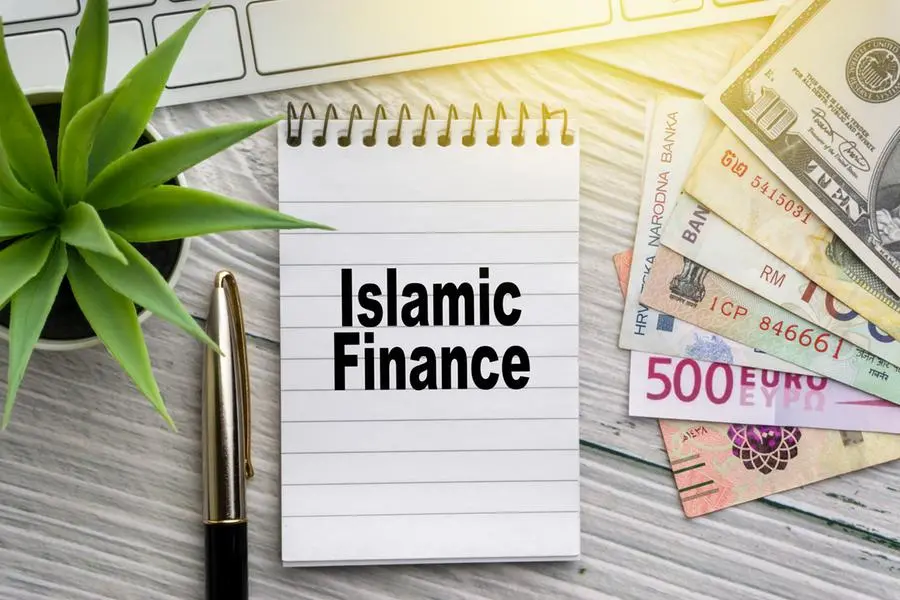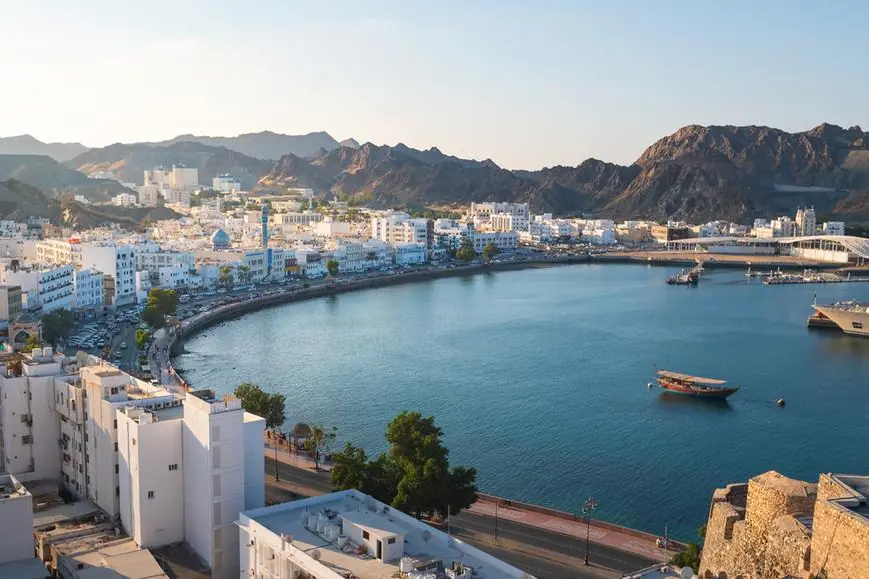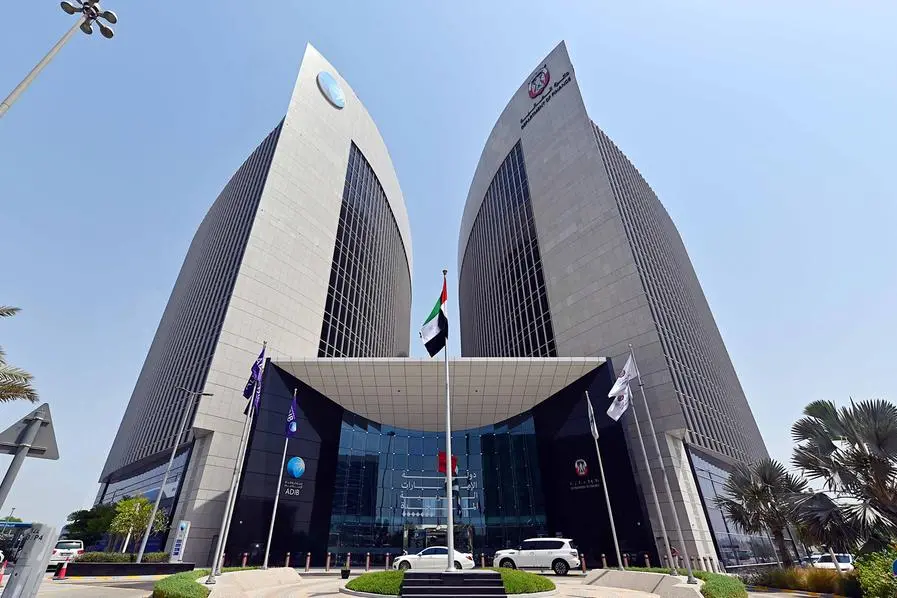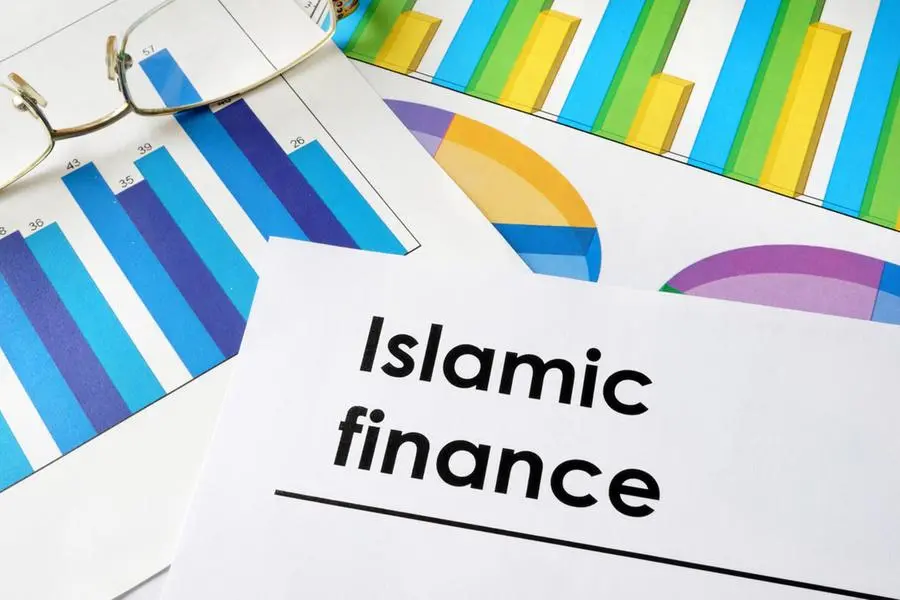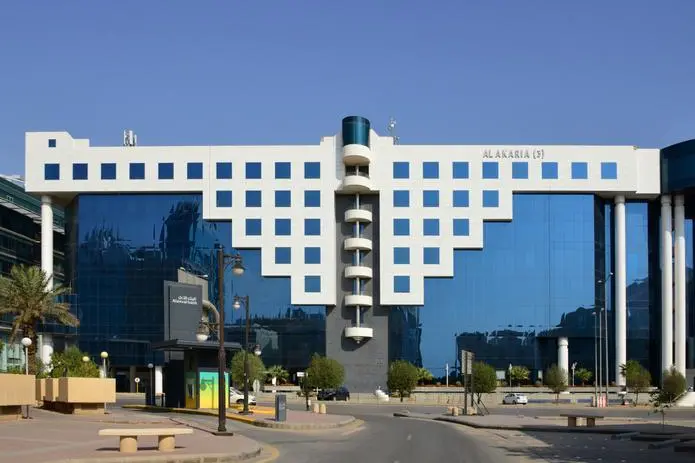PHOTO
Digital generated image of wind turbines, solar panels and Hydrogen containers standing on landscape against blue sky. Getty Images Image used for illustrative purpose.
Doha, Qatar: Qatar’s future energy strategy emphasises reinforcing its LNG export leadership, broadening energy production diversity, and enhancing decarbonisation. By adopting a sector coupling approach, it aims to collectively address environmental challenges across all sectors for increased efficiency and cost-effectiveness.
This comprehensive strategy leverages Qatar’s competitive edge to drive its clean energy transition and energy goals.
Qatar’s clean energy strategy aims to diversify into renewables, targeting a solar capacity increase to 5 GW by 2035. This includes producing green hydrogen from solar projects to serve as a backup energy source, enhancing the reliability of renewable energy and reducing fossil fuel dependence, PwC said in its recent Qatar Economy Watch 2024.
Green hydrogen is also seen as key to reducing greenhouse gas emissions in power generation, hence integrating it Into the existing infrastructure, such as in gas turbines and natural gas pipelines, supports Qatar’s broader environmental goals and commitment to advanced energy technologies.
The country is actively welcoming international investments to grow its private sector, while exploring the potential of emerging industries, such as technology, clean energy, manufacturing, tourism and sports. This strategic transformation highlights commitment to economic resilience and innovation in the face of global and regional challenges.
Moving towards decarbonisation, the country is reducing greenhouse gas emissions by preferring natural gas for power generation, which emits significantly less CO2 than coal and oil, the report noted.
The country has launched solar power projects, including the Al Kharsaah Solar PV Power Plant, which is expected to supply clean energy to over 200,000 households and aims to expand its solar capacity to over 5 gigawatt (GW) by 2035.
It is advancing in sustainable ammonia production with the world’s largest blue ammonia plant, integrating Carbon Capture (CC) and Sequestration (CCS) technology, aiming to increase its CCS capacity by 400 percent by 2035.
In aviation, Qatar Airways is committed to achieving net zero carbon emissions by 205024, with initiatives to increase the use of sustainable aviation fuel (SAF) to 10 percent by 2030, reflecting a wider commitment towards decarbonisation efforts across multiple sectors.
Qatar can tackle environmental issues by investing in a waste-to-fuel plant to produce SAF from domestic and industrial waste, reducing emissions in aviation and industrial sectors while improving waste management. This initiative is not only environmentally significant but also offers a promising business prospect, given the rising SAF demand in the region.
© Dar Al Sharq Press, Printing and Distribution. All Rights Reserved. Provided by SyndiGate Media Inc. (Syndigate.info).
